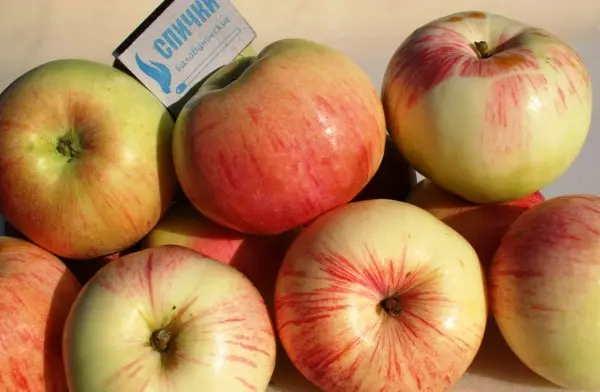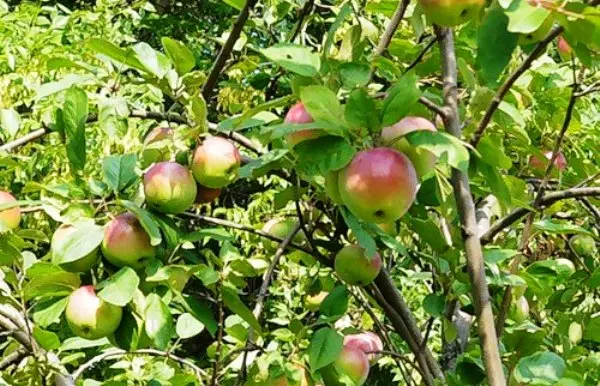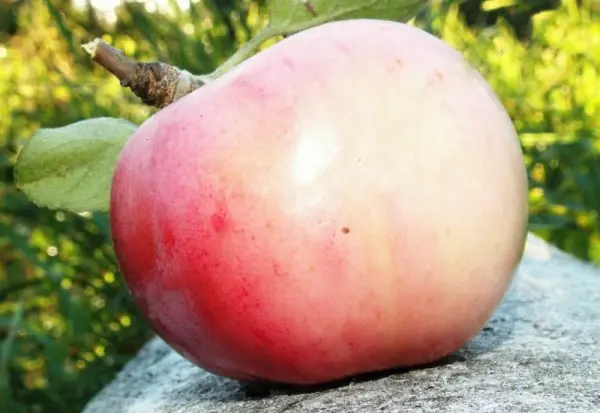Contents
Our compatriots will not have a more beloved fruit than an apple. It is thanks to the variety of varieties and tastes, ecological plasticity that this fruit is a favorite in our country. One of the clearest examples of an impeccable apple tree is the Orlovsky Pioneer apple tree. This variety is autumnal and resistant to scab. It was bred in 1976 at the All- Research Institute for the selection of fruit crops from hybridization. The authors of the Orlovsky Pioneer variety include: E. Sedova, Z. Serova, V. Zhdanov, Yu. Khabarov. In 1999, the variety was approved for use in the Central region. Details about it: description, characteristics of the fruits, consideration of the advantages and disadvantages further.
Description
The height of the trees is moderate, the crown is rounded of medium density. The branches of the tree are crooked, directed upwards and grow almost at right angles to the trunk. The bark of the bole of the apple tree and its main branches is gray and smooth. The dominant type of fruit structures are simple and complex annulus. Brown shoots are straight and thick, as well as rounded. The buds are small, conical in shape, pressed against the branches and slightly lowered. Fruit buds of medium shape, lowered and elongated.
The leaves of this variety of apple trees are oblong, medium in size, dark green in color, smooth, shiny, with a twisted top, a concave slightly lowered plate and a wavy edge. The handle of the Orlovsky pioneer is also omitted, has an average length and thickness. Stipules of intermediate size, lanceolate. The Oryol pioneer blooms with white-pink flowers, medium in size, the leaves of which are closed, and the stigma of the pistil is located below the anthers.

As for winter hardiness, the variety may well be applicable in central Our Country.
Characteristics of fruits
The fruits of the Orlovsky pioneer weighing from 100 g to 200 g, strongly flattened, slightly beveled and have:
- the average size;
- ribbed surface;
- greenish color at the time of their removal, light yellow color at the time of use;
- integumentary color similar to blush, with red stripes;
- multiple small green barely noticeable subcutaneous dots;
- curved straight set stalk of medium length and thickness;
- a sharp-conical narrow funnel with little or no rustiness;
- closed cup;
- intermediate size saucer;
- the same size onion-shaped heart;
- open chambers;
- narrow saccular subcup tube;
- brown, egg-shaped seeds;
- greenish dense flesh with a sweet and sour taste, with a slight aroma.

The chemical structure of the Orlovsky Pioneer fruit:
- ascorbic acid – 16 mg / 2 g;
- P – active substances – 522 mg / 100 g;
- sum of sugars – 11%
- titratable acids – 0,8%
- pectin substances – 16,4%.
The fruit harvest time falls on the second half of August, and the consumer season lasts two months – September and October. The variety Orlovsky Pioneer has a high yield.
Advantages and disadvantages
The advantages of this variety include:
- resistance to 4 out of 5 races of scab;
- numerous harvest;
- dessert taste;
- commercial type of fruit.

Disadvantages of the Orlovsky Pioneer variety: with a plentiful harvest and careless pruning, the fruit is crushed on the tree.
Thus, by purchasing seedlings of this type of apple tree, you will soon please yourself and your loved ones with delicious apples, but you should remember that it is undesirable to plant a tree in an open area. Feel free to garden and do not forget to take care of your garden.
Video “How to properly care for fruit trees”
In the video, an experienced gardener talks about how to care for fruit trees so that they are healthy and give a high yield.
Author: Svetlana Galitsina
Loading…









